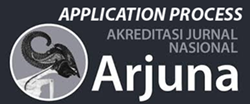Effectiveness of Gargling with Lemon Juice (Citrus lemon) and Betel Leaf Decoction on Debris Index and Saliva pH of Elementary School Students in Aceh Besar District
DOI:
https://doi.org/10.59653/jhsmt.v2i03.1139Keywords:
lemon, betel leaf, saliva pH, Debris Index, oral healthAbstract
This study aims to evaluate the effectiveness of gargling with lemon juice (Citrus lemon) and betel leaf decoction (Piper betle) on the Debris Index and saliva pH among elementary school students in Aceh Besar District. The background of this research is rooted in the high prevalence of dental caries and other oral health issues in Indonesia, particularly among children. The methodology employed is a quasi-experimental design with two treatment groups, where one group gargles with lemon juice and the other with betel leaf decoction. The results of the study indicate that gargling with betel leaf decoction significantly increases saliva pH (an increase of 1.34) and reduces oral acidity, which is crucial for preventing enamel demineralization and lowering the risk of cavities. Conversely, lemon juice demonstrates a significant reduction in the Debris Index (a decrease of 1.3), highlighting its effectiveness in cleaning plaque and food residues from teeth in the short term. While lemon juice is effective for quick cleaning, its use must be approached with caution due to its strong acidic nature, which can damage tooth enamel if used excessively. In conclusion, this study asserts that betel leaf decoction is superior for long-term use in maintaining oral health, while lemon juice is more effective for quick cleaning but should be used judiciously. These findings emphasize the importance of selecting appropriate oral care methods, particularly in populations at higher risk for dental issues.
Downloads
References
Alioes, Y., Jhonel Putri, C., Erawati, S., Artikel Abstrak, I., & Author, C. (2020). Meningkatkan pH saliva dengan berkumur infusum daun kemangi. Prima Journal of Oral and Dental Sciences, 3(1), 5–9. https://doi.org/10.34012/PRIMAJODS.V3I1.1131
Anderson, S., Johnston, C., Whisner, C., & Alexon, C. (2019). The Effects of Dietary Vinegar on Salivary pH and Dental Erosion.
Bagramian, R. A., Garcia-Godoy, F., & Volpe, A. R. (n.d.). Perspective and Call for Action The global increase in dental caries. A pending public health crisis.
Bhadauria, U. S., Priya, H., Purohit, B., & Singh, A. (2024). Effectiveness of school oral health programs in children and adolescents: an umbrella review. Evidence-Based Dentistry. https://doi.org/10.1038/S41432-024-01013-7
Bratthall, D. (2000). Introducing the Significant Caries Index together with a proposal for a new global oral health goal for 12-year-olds. International Dental Journal, 50(6), 378–384. https://doi.org/10.1111/J.1875-595X.2000.TB00572.X
Chang, A. K., Kim, B. kyoung, & Kim, A. Y. (2023). The impact of aromatherapy-based oral care on oral conditions, salivary pH, and halitosis in older adults with dementia: Pilot study. Geriatric Nursing, 53, 109–115. https://doi.org/10.1016/J.GERINURSE.2023.07.010
Gadiyar, A., Gaunkar, R., Kamat, A. K., Tiwari, A., & Kumar, A. (2018). Impact of oral health-related behaviors on dental caries among children with special health-care needs in Goa: A cross-sectional study. Journal of Indian Society of Pedodontics and Preventive Dentistry, 36(1), 33–37. https://doi.org/10.4103/JISPPD.JISPPD_214_17
Harahap, R. N., Andayani, R., Imron, A., Program, N., Dokter, S. P., Fakultas, G., & Gigi, K. (2017). Perubahan Potential of Hydrogen (pH) Saliva Sebelum dan Sesudah Berkumur Air Rebusan Jahe Merah (Z. Officinale Var Rubrum) Pada Mahasiswa Fakultas Kedokteran Gigi Universitas Syiah Kuala Angkatan 2016. Journal Caninus Dentistry, 2(3), 117–120. https://jim.usk.ac.id/JCD/article/view/5678
Kleinberg, I., & Jenkins, G. N. (1964). The pH of dental plaques in the different areas of the mouth before and after meals and their relationship to the pH and rate of flow of resting saliva. Archives of Oral Biology, 9(5), 493–516. https://doi.org/10.1016/0003-9969(64)90015-9
Levine, R., & Stillman-Lowe, C. (2019). The Scientific Basis of Oral Health Education. https://doi.org/10.1007/978-3-319-98207-6
Mallikarjun, N., & Professor, A. (2016). “Isolation and Characterization of Antimicrobial Compounds from Medicinal Plants and Their Effect on Pathogens of Dental Caries.”
Petersen, P. E. (2008). World Health Organization global policy for improvement of oral health - World Health Assembly 2007. International Dental Journal, 58(3), 115–121. https://doi.org/10.1111/J.1875-595X.2008.TB00185.X
Petersen, P. E., Bourgeois, D., Ogawa, H., Estupinan-Day, S., & Ndiaye, C. (2005). Policy and Practice The global burden of oral diseases and risks to oral health. Bulletin of the World Health Organization, 83(9).
S, D. K., & Kumar, S. (n.d.). A Review of the Therapeutic Characteristics and Applications of Betel Leaves. Retrieved August 30, 2024, from https://www.researchgate.net/publication/380637551
Sano, H., Shibasaki, K. ichiro, Matsukubo, T., & Takaesu, Y. (2003a). EFFECT OF CHITOSAN RINSING ON REDUCTION OF DENTAL PLAQUE FORMATION. The Bulletin of Tokyo Dental College, 44(1), 9–16. https://doi.org/10.2209/TDCPUBLICATION.44.9
Trinawati, A., Suwarsono, S., & Salikun, S. (2023). Herbal Toothpaste Extracts (Betel Leaf, Lime, and Salt) to Reduce Plaque. Journal Center of Excellent : Health Assistive Technology , 1(2), 76–81. https://doi.org/10.36082/JCHAT.V1I2.1270
Yu, I.-C., & Fang, J.-T. (2024a). Efficacy of Lemon Mouthwash in Improving Dry Mouth Symptoms and Salivary Flow in Hemodialysis Patients. Journal of Renal Nutrition. https://doi.org/10.1053/J.JRN.2024.07.007
Downloads
Published
How to Cite
Issue
Section
License
Copyright (c) 2024 Eka Sri Rahayu, Teuku Salfiyadi, Reca Reca

This work is licensed under a Creative Commons Attribution-ShareAlike 4.0 International License.
Authors who publish with this journal agree to the following terms:
- Authors retain copyright and grant the journal right of first publication with the work simultaneously licensed under a Creative Commons Attribution-ShareAlike that allows others to share the work with an acknowledgement of the work's authorship and initial publication in this journal.
- Authors are able to enter into separate, additional contractual arrangements for the non-exclusive distribution of the journal's published version of the work (e.g., post it to an institutional repository or publish it in a book), with an acknowledgement of its initial publication in this journal.
- Authors are permitted and encouraged to post their work online (e.g., in institutional repositories or on their website) prior to and during the submission process, as it can lead to productive exchanges, as well as earlier and greater citation of published work (See The Effect of Open Access).
























